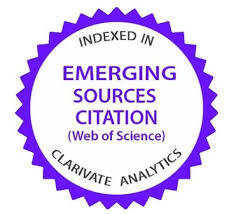You and I are different, but that doesn't make you better. A study on gender stereotypes among high school students
DOI:
https://doi.org/10.35197/rx.12.01.2016.07.sbKeywords:
gender stereotypes, violence, school environment, classroom spaceAbstract
Interest in learning about the ways in which children and adolescents are resolving their differences in school contexts has grown considerably in the last five years, especially when the concern for responding to bullying behaviors is focused on the gender category. However, there are some behaviors that, without being considered atypical, are creating a type of relationship that conceals a form of violence and reinforces traditional stereotypes.
With the aim of contributing to the construction of knowledge and alternatives, I propose to show what ideas students in the last year of Upper Secondary Education have about behaviors, attitudes, activities and gender geography and how this determines coexistence agreements. I am interested in highlighting those ideas that come from their family environment and that, from early childhood to adolescence, they have been reproducing in daily life as they are part of institutionalized practices. In addition, I start from the idea that primary learning provides human beings with the experiences that guide their social interactions. Based on the information gathered through direct and participant observation in classrooms, in the school hallways, in the development of some activities and with the information derived from some interviews, I recognized some factors that are intervening in: 1) the type of relationships they establish based on their gender and; 2) the way in which they appropriate school spaces to reproduce some practices of control, domination and power based on this social construction. This is understandable, at least among the student population at the high school level, if we consider that the majority behave according to the stereotypes learned in the family environment and only some have started a process of reflection triggering their capacity for agency to modify their immediate reality in the school context.
Downloads
References
Barbieri, T. (1991). Los ámbitos de acción de las mujeres M. de Revista Mexicana de Sociología, Vol. 53, No. 1. Ene. - Mar. pp. 203-224.
Centro de Bachillerato Tecnológico Tultitlán. (2015). Diagnóstico de Ambiente Escolar Positivo ciclo escolar 2015-2016, mimeógrafo.
García, M. F. A. (2003). Desarrollo del género en la feminidad y la masculinidad. Madrid, Narcea. Giddens, A. (1995). La constitución de la sociedad. Bases para la teoría de la estructuración,
Buenos Aires, Argentina, Amorrortu Editores.
Gilliom, M., Shaw, D. S., Beck, J., Schonberg, M. y Lukon, J. (2002). Anger regulation in disadvantaged preschool boys: Strategies, antecedents, and the development of self- control. Developmental Psychology, 38, pp. 222–235.
Gudiño, A. (2013). “Desde Tecámac a Tultitlán opera red de tratas de personas” en Milenio Diario.
de noviembre de 2013.
Lefevbre, H. (1991). The production of space. Londres, Blackwell. Millett, K. (1995). Política sexual. Madrid, Cátedra.
Scott, J. (1996). “El género: Una categoría útil para el análisis histórico” en: Lamas M. (Comp.), El género: la construcción cultural de la diferencia sexual. México. PUEG.
Siegel, D. J. (1999). The developing mind: Toward a neurobiology of interpersonal experience. New York, Guilford Press.
Ramírez, S. (1975) Infancia es destino. México, Siglo XXI editores. Artículos de información electrónica:
Bermúdez, J., Sagarduy, L. (s/f). “Factores psicosociales relacionados con el uso experimental de drogas ilícitas en adolescentes de Monterrey y Victoria, México” [En línea] Disponible en: http://www.lanzateavivir.uat.edu.mx/factores/Documentos%20compartidos/cap%C3%AD ulo-JOSE-JAVIER-%20drogas-%20FINAL-FEB-10-2008.pdf. [Consultado 19 de marzo 2016]
CMDPDH y OCNF. (2010). “Alerta de género en el Estado de México” [En línea]. México, disponible en: http://cmdpdh.org/wp-content/uploads/2015/08/laura_carrera_lugo.pdf [Consultado 23 de febrero 2016).
CMDPDH y OCNF. (2011). “Alerta de género en el Estado de México” [En línea]. México, Disponible en:http://www.cmdpdh.org/wp- content/uploads/2015/08/version_estenografica_sesion_11_01_2011.pdf [Consultado 23
de febrero 2016).
Jusidman, C. (2000). “Familia y relaciones de género en la educación para la democracia” en Foro de educación cívica y cultura política democrática [En línea], Instituto de Investigaciones Jurídicas, UNAM, disponible en: http://biblio.juridicas.unam.mx/libros/3/1166/10.pdf [Consultado 17 de marzo 2016]
Plan de Desarrollo. (2005). “Pilar 1: Seguridad Social”, en Plan de Desarrollo del Estado de México 2005-2011 [En línea]. Disponible en: http://transparencia.edomex.gob.mx/plandesarrollo/2005-2011/pilar1.pdf [Consultado 23
de marzo 2012]
Downloads
Published
How to Cite
Issue
Section
License
Copyright (c) 2016 Sara Raquel Baltazar Rangel

This work is licensed under a Creative Commons Attribution-NonCommercial 4.0 International License.
Usted es libre de:
- Compartir — copiar y redistribuir el material en cualquier medio o formato
- Adaptar — remezclar, transformar y construir a partir del material
- La licenciante no puede revocar estas libertades en tanto usted siga los términos de la licencia
Bajo los siguientes términos:
- Atribución — Usted debe dar crédito de manera adecuada , brindar un enlace a la licencia, e indicar si se han realizado cambios . Puede hacerlo en cualquier forma razonable, pero no de forma tal que sugiera que usted o su uso tienen el apoyo de la licenciante.
- NoComercial — Usted no puede hacer uso del material con propósitos comerciales .
- No hay restricciones adicionales — No puede aplicar términos legales ni medidas tecnológicas que restrinjan legalmente a otras a hacer cualquier uso permitido por la licencia.








